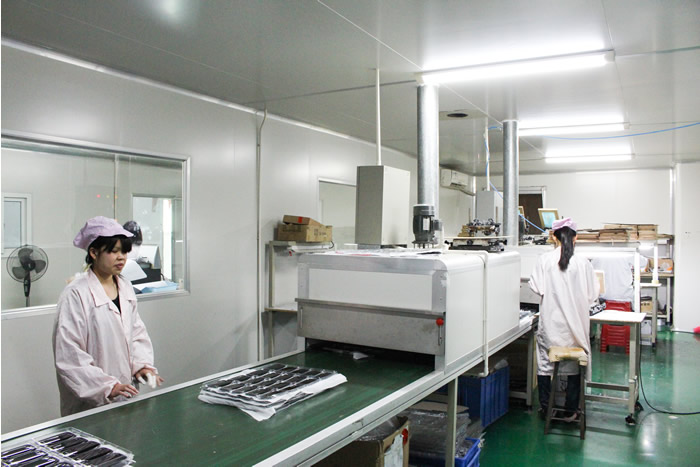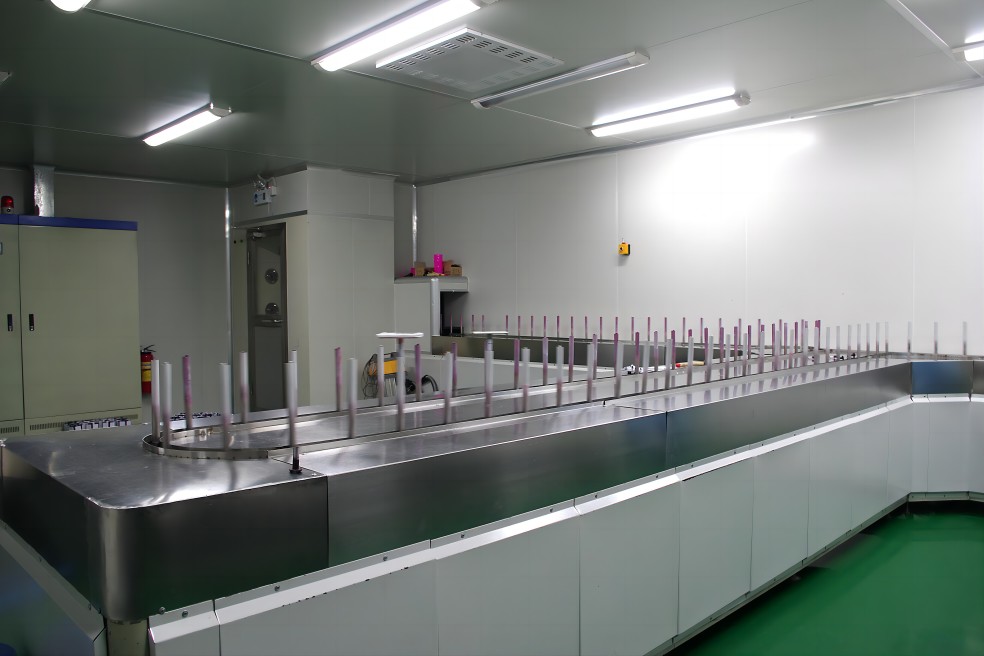Secondary Decoration For plastic injection molding components
JBR offers a range of decorating services for company’s that need more than just the molded part. Perhaps a graphic image applied to the outside surface, chrome-plating, or painting to enhance product aesthetics. EMI/RFI shielding to promote conductivity and yet resist static charge or various exterior coatings are also available.
We offer pad-print equipment, hot stamping machinery, as well as painting, plating, and shielding resources to accommodate your decorating needs.
JBR routinely advises clients on the various decorative process available. We would be pleased to advise you on best practices regarding your specific project needs.
All of our secondary decoration for plastic injection molding components include UP painting, Sparying paint, silk screening, pad printing, laser-etching, and hot-plate welding, etc.



Spray Painting
Painting injection molded plastic parts requires an in depth knowledge of the chemistry and characteristics of the various plastic materials. It also requires knowledge of the mold and all the variables involved in the plastic manufacturing process. Several factors, including the molding process, mold type, mold surface, and part surface preparation must be considered and understood to achieve long-lasting adhesion between paint and plastic.
Painting injection-molded parts is a fast and cost-effective way to ensure a uniform look and protect the newly manufactured parts. After injection molding, the plastic parts are ejected from the machine. These parts are bare – the finished texture and color will be determined by the characteristics of the plastic resin. The parts can be sent directly to the customer if no further post-processing is required.
Some injection-molded parts will require post-processing to achieve the desired texture and color. Painting is a fast and cost effective way to ensure uniformity in texture and color over an extended run of parts. Painting also offers several benefits including covering flaws, chemical and stain resistance, protection from UV light, scratch and abrasion resistance, and protection from the elements.
Spray painting is the simplest and most cost-effective painting process used to add color or character to plastic parts. Some paints are two-part and self-curing. Other plastic paints require UV curing to increase durability. An JBR Project Manager can help you determine the best type of spray paint for your project.
The experts at JBR can help customers choose the right painting process to achieve the desired finish.
UV Painting
UV coating, UV Spray painting, or ultraviolet coating, is a very glossy, shiny liquid coating applied to a printed paper or plastic surface and cured on a printing press or special machine using ultraviolet light. The coating hardens, or cures when it is exposed to the ultra-violet radiation.
Plastic is used in almost every industry, from aerospace innovation and 3D printing to electronics, medical equipment’s and product packaging. Many applications benefit from the advantages that coatings provide such as wear resistance, insulation, chemical resistance and improved performance – but plastic presents unique challenges such as,
Heat Sensitive Plastics
Adhesion
Low Energy Substrate
Sensitivity to Solvents
Advantages of UV Coating for Plastics:
There are several reasons opting for custom UV coating service is the best decision for manufacturing:
Scratch Resistance
Dependable Chemical resistance
Less Curing Time, which eventually results in better production efficiency
Versatility in Colour and Finish Options
Better Product performance in Harsh Environments
Environment Friendly Solution
Electronics manufacturers use UV coatings to ensure durability and functionality of smaller plastic parts, while the automobile industry relies on UV Coatings on plastic components to have ideal appearance, scratch resistance and better functionality over the years.
All these major performance benefits of UV Coating typically also result in lower production costs compared to other coating options, making UV coating for plastic a cost-effective solution. When it comes to packaging, the excellent adhesion to plastics, visibility of product information on thermoplastic bags and other storage containers is vital for tracking purposes, quality assurance and customer satisfaction makes UV coating an ideal solution for it.
In addition to plastic polymers, UV coatings can be done on wooden surfaces and an endless amount of other industrial surfaces as stated below:
Paper
Glass
Fabric
Concrete
Metal
Plastics are of different types and each have their own unique characteristics and the proposed application plays a huge role in deciding the plastic material and coating requirement for to suit the application.
Silk Screening
Silk screening is a process which is used to create prints on a wide variety of materials. Many commercial printers use silk screening to print, since it is cheap and easy, and when done well, it results in high quality prints.
Silk screening is a cosmetic application applied to many of our custom plastic enclosures. We can use existing artwork, or work with you in developing your screen tooling with the aid of contracted graphic designers.
Silk screening is used when more than one color is desired. This painting process also provides a way to apply detailed designs, in multiple colors, onto the part. There are some limitations to where and how silk screening can be used. Silk screening requires a flat surface where the paint will be applied. The process involves making a screen — a thin plastic sheet with a screen. A negative of the design is printed on the screen. The screen is laid on the part, paint is applied to the screen, and the screen is then removed, leaving behind the design. A separate screen is required for each paint color.
Pad Printing
Pad printing, also called tampography or tampo printing, is an indirect offset (gravure) printing process where a silicon pad takes a 2-D image from a laser engraved (etched) printing plate (also called cliché) and transfers it to a 3-D object.
It is an indirect photogravure process, which means the transfer of an image to a substrate or medium. It is referred to as an indirect process because the printing plate does not once come in contact with the medium. The ink for printing is indirectly transferred by the help of a silicon pad, using heat, and in a printing machine.
Pad printing has evolved greatly since the time it was first discovered and used. All the developments have led us to the present-day process and pad printing equipment that are highly efficient. The fact that silicon is one of the best mediums in printing methods, gives it such value in today’s market.
Pad printing is a popular technique in many industries. The first modern application included the printing of Swiss watch faces. Today industries such as cosmetics, medical and electronics, etc., use this technology and its development has not stopped, ever since.
Hot Plate Welding
Hot Plate Welding is a joining solution that welds together virtually any shaped part, including those with contoured parting lines, internal walls and free-standing walls. Process advantages include difficult geometries can now be welded and helps eliminate consumables such as glues, solvents, and adhesives.
The process of hot plate welding uses a heated platen to melt the joining surfaces of the two halves of a thermoplastic part. The part halves are brought into contact with a precisely heated platen for a predetermined period. After the plastic interfaces have melted, the parts are brought together to form a molecular, permanent, and often hermetic bond. A properly designed joint welded under precise process control often equals or exceeds the strength of any other part area.
It’s an efficient and cost-effective method for manufacturing components from plastic materials such as PP, ABS, PC, TPE, and more. Hot plate welding offers numerous advantages over other plastic joining methods, such as stronger, particulate-free welds. This guide will cover the basics of hot plate welding, including its steps, benefits, and typical applications. We will also discuss tips for designing your parts for hot plate welding success and the equipment used in this process.


Laser Etching
High-quality, reproducible, and completely without solvents – laser-based joining of plastics has many advantages and replaces traditional processes in many industries such as adhesive bonding and ultrasound or vibration welding. When joining using a laser, the weld seam can also be adapted to new component geometries as desired. Since the heat input is severely limited locally, delicate electronic components are protected effectively, for example. A distinction is typically made between four versions of laser welding for plastics: contour welding, quasi-simultaneous welding, simultaneous welding, and mask welding. When it comes to plastic welding, laser powers of up to approx. 300 watts are generally used.
Laser beam transmission welding always involves a component that is transparent for the laser and a laser absorbing component being merged. Before they are welded, the join partners are positioned and then pressed together. In the actual fusion process, the laser beam passes through the transparent component without significantly heating it up, before the absorbing component takes the laser energy, which heats up its surface. This energy is transferred via heat conduction onto the surface of the transparent component. The energy that has been absorbed plasticizes the plastic which, with pressure and heat conduction, leads to the components being joined. The existing joining pressure results in a substance-to-substance bond for both parts. The firmness of the resulting weld is typically within the region of the base material’s strength.
High quality and reproducible
The weld seams are of a consistently high quality. The strength of the seams produced corresponds to that of the base material.
Flexible
The weld seam can be adapted to various component geometries as desired.
Residue free
Compared to adhesive bonding or vibration and ultrasound welding, no adhesive residues or plastic flakes are created when laser welding.
Gentle
The heat input is restricted locally and is gentle on delicate electronics.
Low noise and wear
Laser plastic welding is not just gentle for the material, but also for the environment.
When laser welding plastics using the transmission welding method, two types of thermoplastics are joined with one another: the laser passes through the transparent mating part and the absorbing mating part is heated. The absorbing plastic melts the transparent joining area. The mating parts must be pressed together using a suitable fixture in order to ensure sufficient heat transfer.
Innovative laser plastic welding systems enable new manufacturing methods in automotive engineering, medical technology, sensor technology, electronics and microsystems technology. Each of our developments are considered state of the art.


